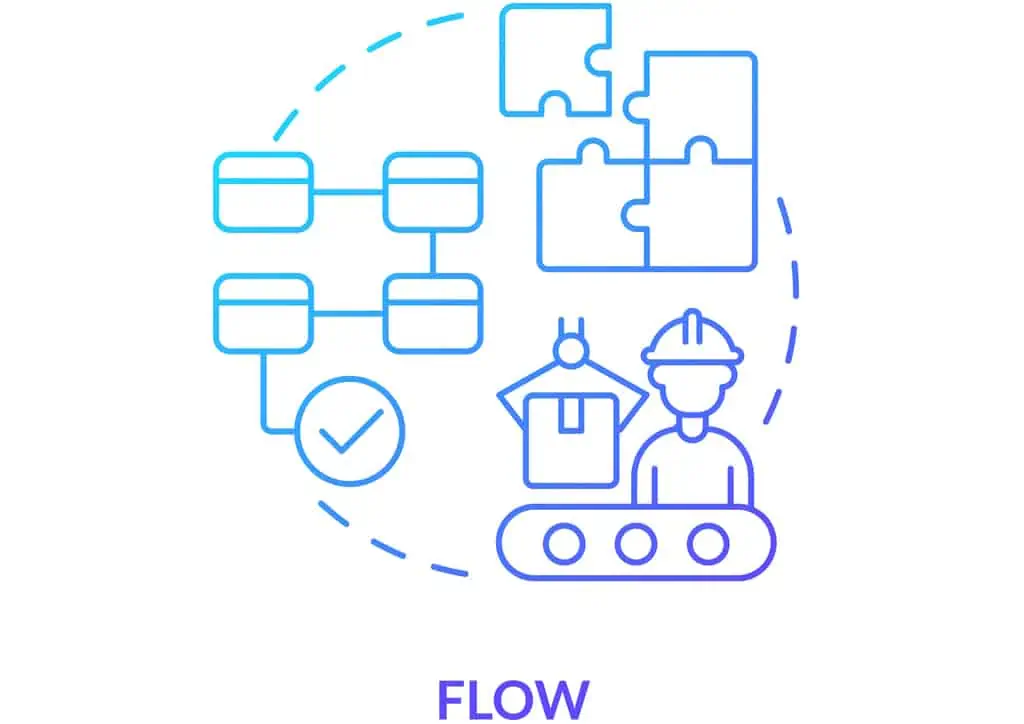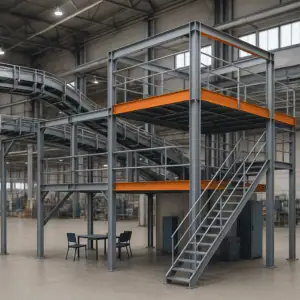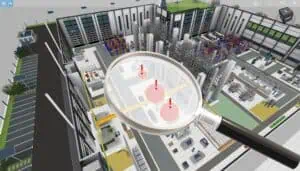Are you struggling with production layout planning? Don’t worry, we’ve got you covered! In this blog, we’ll take you through the five basic principles of production layout planning that you should know to streamline your manufacturing process and increase efficiency. So let’s get started!

Production layout planning is a critical aspect of any manufacturing facility. It involves designing the optimal layout for your factory to ensure that it is efficient, productive, and safe. The benefits of a good plant layout are numerous, including increased productivity, reduced costs, and improved safety. By following these principles, you can create a lean layout that maximizes your plant’s potential and helps you achieve the profitability goals set by managemet.
The Benefits of Having a Good Production Layout Plan
Having a good production layout plan can bring numerous benefits to your business, especially for SMEs. A well-thought-out plant layout can improve efficiency, reduce waste and ultimately lead to higher profits. By understanding your workflow and value stream, you can design a layout that maximizes the use of space and resources and ensures your team can work as efficiently as possible.
Additionally, by placing equipment in the most appropriate locations, you can further streamline operations and reduce the risk of accidents. Optimizing material flow can also help reduce waste and improve efficiency, while incorporating flexibility into your design can ensure that your layout can adapt to changing business needs.
By following the 5 basic principles of production layout planning, you ensure that your business is operating at its full potential. Production layout planning is a crucial aspect of any manufacturing design process. It is a systematic approach to designing and organizing the layout of a plant to optimize productivity.
Principle 1: Understand Your Value Stream and Requirements
To effectively plan a production layout, it is significant to understand your processes and objectives. This is the first principle of production layout planning and it sets the foundation for the rest of the manufacturing plant layout design process. By understanding your logistic processes, you can identify areas that need improvement and optimize the flow of materials, inventory or components through your facility. You can also determine the equipment and resources needed to efficiently carry out your processes. You’ll need to decide when to use Kanban, U-shape assembly stations or a cellular layout. To understand that lean flow principles fundamentally require changes in procurement strategy, performance measurement and production planning and control is key.
“The biggest single mistake you can make is to go directly to floor plans and arrangements without solving fundamental issues.”

Understanding your objectives and requirements helps you align your plant layout with your business goals, whether it’s reducing handling costs, increasing productivity, or improving quality. Factory Layout Design is not just rearranging of equipment. A Lean plant layout is one that applies Lean principles. So take the time to thoroughly analyze your processes and goals before moving on to the next principle of production layout planning. You may have to choose tools that connect value stream and layout planning.
Principle 2: Determine the Most Efficient Use of Space and Resources
Determining the most efficient use of space and resources can help you optimize your plant and maximize ROI. By analyzing your current layout and identifying areas where space or resources are being underutilized, you can make adjustments that will improve efficiency and reduce waste. This could mean rearranging workstations, investing in new equipment, or even outsourcing certain tasks to free up space.
“Bigger is not always better. Facilities should be designed to the demand, rather than build the biggest facility on the site that we can.”
The key is to be strategic in your approach and always keep your value stream and objectives in mind. With a well-planned production layout, you can ensure that your facility is operating at peak efficiency and that you’re getting the most out of your resources. So take the time to evaluate your current setup and make any necessary changes – your bottom line will thank you.
Principle 3: Maximize Productivity with Appropriate Equipment Placement
When it comes to support Operations Management, appropriate equipment placement is key. By arranging equipment in a logical and Lean-focused way, you can reduce the amount of time it takes for workers to move between machines and workstations, ultimately the root cause for one type of waste that Lean tries to minimize. If necessary, use a digital tool to make informed decisions and not rely on your pure gut feeling.
“Too often, people assume constraints when they really don’t exist. Lean requires small production batch sizes and modular equipment rather than utilization. Creativity can help to overcome some seemingly formidable obstacles to continuous flow.”
Workstations can be reduced in size or replaced altogether to allow for a cellular layout. Additionally, proper equipment placement can improve safety by reducing the risk of accidents and injuries caused by cramped or poorly arranged workspaces. When designing your production layout plan, take the time to carefully consider the placement of each piece of equipment and how it fits into the overall workflow of your site. By doing so, you can ensure that your manufacturing operates at maximum efficiency and profitabilty.
Principle 4: Optimize Material Flow Through the plant
One of the most important principles in production layout planning is optimizing material flow through the facility. This means that you need to ensure that materials move through production in the most efficient way possible. To achieve this, you need to consider the layout of the facility and the placement of equipment, as well as the flow of materials from one area to another.
“There should be simple material delivery routes and pathways through the facility that connect the processes.”

Traditionally, Functional Layout has focuses on linear lines and process-oriented departments. However, Lean Production has placed new demands on the way how assembly lines must be set up for Operational Excellence. Avoid investing in expensive material handling systems that only automate the transportation waste that exists.
Principle 5: Incorporate Flexibility Into Your Design
Flexibility also allows you to future-proof your plant and ensure that it your production processes will adapt accordingly. It is crucial to understand that the business world is constantly evolving.
“A common mistake in implementing lean layouts is maintaining traditional manufacturing strategies while trying to install physical flow.”

This means that you need to be able to adapt to changes in your production processes, such as changes in product demand or new product lines. So don’t overlook this important principle when you’re planning for an update of your manufacturing plant layout design. You can create an environment where change is seamless and without sacrificing rentability. A flexible facility location should be designed with multiple pathways for material flow and allow for changes in demand or unexpected events such as equipment breakdowns.
“A rule of thumb is to make some large radical changes, to get the 70 percent or 80 percent level, and then use continuous improvement efforts from there.”
Incorporating flexibility into your design doesn’t mean sacrificing efficiency of your operation. Having a flexible layout means that you can easily adjust assembly lines and allocate resources. For example, if there is suddenly a surge in demand for one to respond quickly when unexpected changes occur in the market or within your company. Cellular layouts or U-shaped assembly stations are a viable approach.
Conclusion – Achieve Operational Excellence With Proper Planning
In this blog, we have discussed the 5 basic principles of production layout planning that you should know. These principles include understanding your workflow processes and objectives, determining the most reasonable use of space and resources, maximizing productivity with appropriate equipment placement, optimizing material flow through the facility, and incorporating flexibility into your design.
By following these principles, you can create a production layout plan that is way more efficient, effective, and flexible than a traditional fixed-position or process plant. It can adapt to changing business needs. With proper planning, you can make the most out of your facility and achieve your production goals with ease. So, take the time to understand these principles and apply them to your facility layout design process. You will be amazed at the difference it can make in your business operations.



